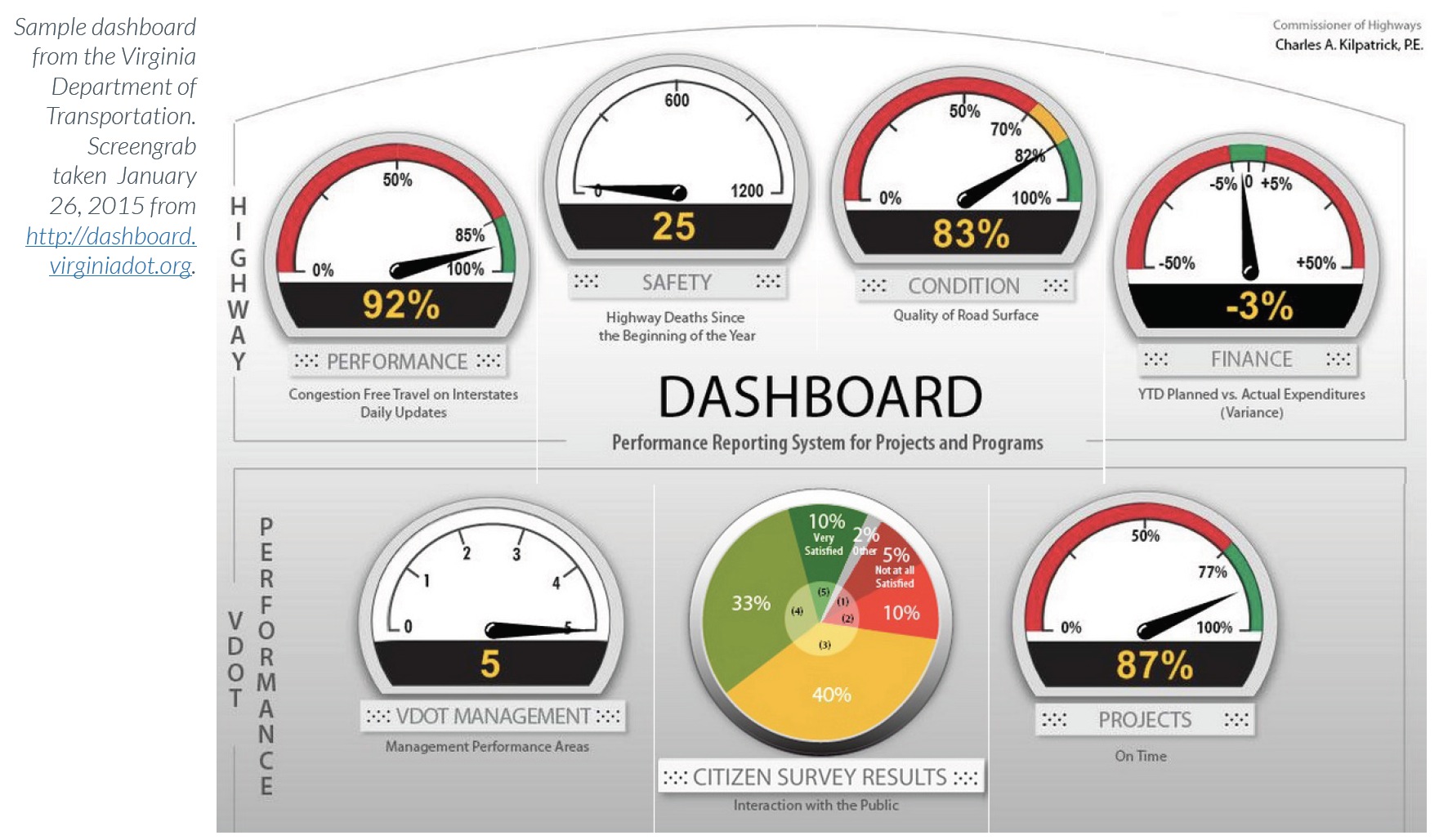TRANSPORTATION FOR AMERICA
Introduction
At a time when dollars for transportation programs are being stretched to the breaking point and many stakeholders are urging the American people to pay more, taxpayers are wondering what they get for their current investment. When they contribute their hard-earned money, they want to know how that investment will help their commutes, their pocketbooks, the larger economy and their community’s quality of life. Unfortunately, most transportation agencies focus their attention on the performance of the transportation system as an end unto itself and as a result, have a hard time making a compelling case to their ultimate customers.
If this were the education arena, it would be as though taxpayers were only told about the number of textbooks purchased or teachers hired, when what they really want to know is that kids are learning and being adequately prepared for college and/or careers. Teachers and textbooks are important factors in the students’ success, but it is the performance of the students that really matters. This performance is measured and reported — to parents through report cards and to taxpayers through test scores, admission and drop-out rates. And then funding is directed where it is most needed.
Many transportation agencies have measured their performance in terms of internal operations — say, projects on schedule and under budget — or by surveying public priorities or satisfaction with the transportation system. Where the transportation sector has considered performance of their system, agencies have typically reported conditions through tools like “dashboards,” which provide a snapshot of current conditions. Snapshots (like these samples below) are important for transparency and outreach, but they do not show trends or whether the investments made led to the outcomes promised.
Over the past 50 years, transportation agencies have focused on tracking a narrow set of goals — typically system condition, safety and sometimes traffic congestion. While these goals are important, they measure the state of the transportation system, not the impact of the system on people’s lives. People want to know that transportation funds are being spent in a way that creates value, supports long-term job growth, makes their communities more attractive to business and talent and will contribute to their economic health and resilience. They are looking for a transportation system that provides not just movement but safe, reliable, affordable access to necessities like jobs, education, health care and groceries. Measuring the impact of transportation investments in a way that resonates with the public is critical going forward. These outcome measures are the focus of this report.
In the past, transportation projects often were rationalized as a way to solve one narrowly defined problem, such as restoring a section of highway to free-flowing conditions. In the current budget environment, however, every expenditure is expected to accomplish multiple outcomes. These additional benefits — supporting local economic development, protecting green space or providing access to opportunity — are no longer “amenities” but, rather, essential benefits to prove the worth of the base project. Outcome performance measures can assist transportation agencies in finding projects that accomplish the most benefit for the least cost.
Using a broad set of measures to determine how investments impact the efficiency of the overall transportation system and help the economy, environment and access to opportunity, policy makers can build the case and public support for putting funding towards transportation needs, even in challenging budget environments.
Finally, a community’s long term resilience — the ability to withstand shocks and stresses and bounce back stronger — is more critical than ever to protect people’s lives, livelihoods and well being. States, regions and cities that invest their public funds to provide a range of cost-effective transportation options are better equipped to respond to economic shocks and to organize response and recovery efforts during and after natural disasters. In other words, investing wisely increases resilience to natural disasters and economic forces that affect states and regions.
Download full version (PDF): Measuring What We Value
About Transportation for America
www.t4america.com
Transportation for America is an alliance of elected, business and civic leaders from communities across the country, united to ensure that states and the federal government step up to invest in smart, homegrown, locally-driven transportation solutions. These are the investments that hold the key to our future economic prosperity.







 RSS Feed
RSS Feed